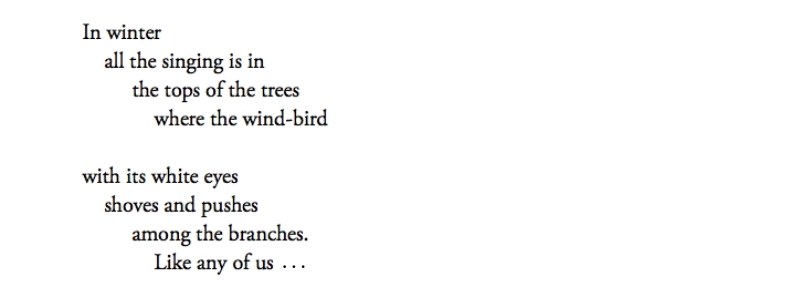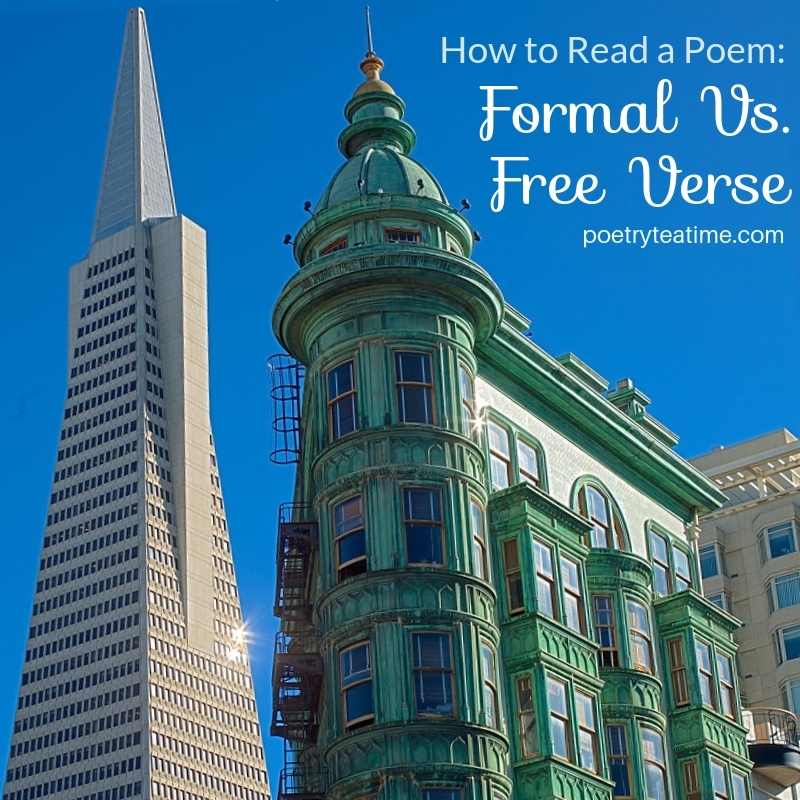Here at Poetry Teatime, we spend a lot of time talking about poetry. But how exactly do you read a poem? In the new year, we’re going to start a series called "How to Read a Poem" that will give you some simple tools to help you tackle any poem you come across. Today, though, we're going to start small by taking a look at the two basic types of poetry: formal and free verse.
[This post contains Amazon affiliate links. When you click on those links to make purchases,
Poetry Teatime receives compensation at no extra cost to you. Thank you!]
To read any kind of poem, it's helpful to know that there are two basic types of poetry. Once you know what type of poem you're dealing with, it's much easier to figure out the best tools to read that poem.
So let's dive in!
Formal Poetry
The first type is formal poetry (also called metrical verse). This kind of poem follows a set pattern of rhymes and rhythms that build up into “forms” based on specific rules. Some types of formal poetry you might know are the sonnet, the ode, and the haiku.
Here's an example of a stanza of a formal poem from "In Memoriam" by Alfred, Lord Tennyson.
Ring out the old, ring in the new,
Ring, happy bells, across the snow:
The year is going, let him go;
Ring out the false, ring in the true.
When you read a formal poem, you’re going to need to do some extra work to figure out what exact type of poem you're reading. Knowing the type of poem will help you know what tools to use.
Also, you may need to spend some extra time figuring out the meaning of each sentence, since the rhymes and rhythms can make this type of poem convoluted and hard to understand. This is especially important since formal poetry is so different from spoken language.
How can you read formal poetry more easily? The more you read formal poems, the easier they will be to recognize and read. Also, we highly recommend The Making of a Poem: A Norton Anthology of Poetic Forms, edited by Mark Strand and Eavan Boland, which provides excellent introductions and examples of poetic forms.

Here are some things to keep in mind when you're reading formal poetry.
- What's great about formal poetry:
- Lots of fun poetic elements like rhyme and rhythm
- Many people grew up with formal poems like nursery rhymes, so they look and sound like what we expect from a poem
- Easy to categorize a poem into its form based on looking at it
- What's tricky about formal poetry:
- Can be written in formal or old-fashioned language that’s hard to understand
- The sentences can be grammatically complicated because the poet is trying to fit them into a specific form
- Rhymes and rhythms don’t sound like everyday talk, so it can feel unfamiliar to people who haven’t read much formal poetry
Now that we have some definitions of formal poetry under our belt, it's time to move on to free verse poetry!
Free Verse Poetry
The second type is free verse poetry. Free verse poems don’t follow the rules of a form and don’t have a set rhythm or rhyme scheme. When you read it out loud, free verse poetry often sounds similar to the way people speak.
Here's an example of the first two stanzas of a free verse poem called "White-Eyes" by Mary Oliver.

You might think that free verse is a lot like prose (sentences written out in paragraph form). There are two main differences to free verse poetry.
First, it’s (almost always) split into lines, which is the easiest way to recognize a free verse poem.
Second, it uses “poetic language,” meaning the poet might include images, metaphors, repeated sounds, rhythms for emphasis, and other tools in the poem to make the poem more vivid, surprising, or powerful. (Check out more about these terms in this post on Poetic Terms from Poetry Teatime.)
When you read free verse poetry, you might be confused by the lack of rules. How are you supposed to read a poem without a form? What about when the grammar doesn't make sense?
First, remember that in everyday speaking, you often use sentences that don't have “correct” grammar. Even if you aren’t used to reading them on paper, you speak in incomplete sentences all the time! So don’t be scared of fragments. That’s just the poet trying to have a conversation with you.
Second, even though there aren’t official “rules” to free verse poems, many free verse poems actually have a lot in common. The more you read free verse, the more normal the line breaks and lack of structure will be!
We also highly suggest getting a copy of Mary Oliver’s Poetry Handbook, which is a easy-to-read guide to understanding poetry for both readers and writers. She has a lot to say about the power and beauty of free verse poetry.

Here are some things to keep in mind when you're reading free verse poetry.
- What's great about free verse poetry:
- Almost always uses everyday language that’s easier to understand
- Usually mimics natural speech patterns and modern-day ways of talking
- Often experiments with how words are arranged on the page, so it can look visually interesting
- What's tricky about free verse poetry:
- Doesn’t always sound like what you might expect from a poem if you’re used to reading formal poetry
- Often contains sentence fragments and incomplete sentences that can be tricky to understand
- Doesn’t have a wider form or category to help understand the poem
So with that in mind, you're now equipped to begin the journey of reading both formal and free verse poetry!
Stay tuned in the new year for our complete guide to getting started with reading a poem. Whether you’d like some help with understanding formal poetry or you want to make sense of the most fragmented free verse poems, we’ve got tools in store for your poetry toolbox.



